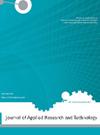Multi-input fuzzy inference system based model to predict the cutting temperature when milling AISI 1060 steel
Q3 Engineering
Journal of Applied Research and Technology
Pub Date : 2023-06-29
DOI:10.22201/icat.24486736e.2023.21.3.1818
引用次数: 0
Abstract
The increase in the cutting temperature during milling has harmful effects which negatively affect the technical and economic machining characteristics such as: residual stresses, dimensions of machined parts and tools life. The nature of milling operations and the tool geometry make it difficult to predict or measure the temperature during the machining process, which is why great attention has been paid to measurement and prediction methodologies of cutting temperature during milling. In this work, a new intelligent identification technique of the cutting temperature based on the fuzzy set theory has been proposed to replace the strategy based on the operator qualification. This technique uses a fuzzy multiple input inference system to determine the influence of the cutting parameters on the cutting temperature. The fuzzy modeling is based on an experimental database resulting from the non-contact measurement of cutting temperature using an infrared camera with an emissivity setting adapted to the material. The results of the fuzzy system show that the fuzzy model is able to specify results providing a very good correlation between the experimental data and those predicted. The average error of the model was approximately 2.242%. The parameters used for the validation of the model were different from the data used for the construction of the fuzzy rules. The results showed that the most important parameter on the cutting temperature is depth of cut. The results obtained in this paper show that the developed model can be applied to predict the cutting temperature with precision during the milling process.基于多输入模糊推理系统的aisi1060钢铣削温度预测模型
铣削过程中切削温度的升高会对残余应力、被加工零件尺寸和刀具寿命等加工技术经济特性产生不利影响。铣削操作的性质和刀具的几何形状使得在加工过程中很难预测或测量温度,这就是为什么铣削过程中切削温度的测量和预测方法受到高度关注的原因。本文提出了一种基于模糊集理论的切削温度智能识别技术,以取代基于操作者资质的切削温度智能识别策略。该技术采用模糊多输入推理系统来确定切削参数对切削温度的影响。模糊建模是基于一个实验数据库,该数据库是使用红外相机对切割温度进行非接触测量所得,该红外相机具有适合材料的发射率设置。模糊系统的结果表明,该模糊模型能较好地描述实验数据和预测数据之间的相关性。模型的平均误差约为2.242%。用于模型验证的参数与用于模糊规则构建的数据不同。结果表明,对切削温度影响最大的参数是切削深度。结果表明,所建立的模型可以较准确地预测铣削过程中的切削温度。
本文章由计算机程序翻译,如有差异,请以英文原文为准。
求助全文
约1分钟内获得全文
求助全文
来源期刊

Journal of Applied Research and Technology
工程技术-工程:电子与电气
CiteScore
1.50
自引率
0.00%
发文量
0
审稿时长
6-12 weeks
期刊介绍:
The Journal of Applied Research and Technology (JART) is a bimonthly open access journal that publishes papers on innovative applications, development of new technologies and efficient solutions in engineering, computing and scientific research. JART publishes manuscripts describing original research, with significant results based on experimental, theoretical and numerical work.
The journal does not charge for submission, processing, publication of manuscripts or for color reproduction of photographs.
JART classifies research into the following main fields:
-Material Science:
Biomaterials, carbon, ceramics, composite, metals, polymers, thin films, functional materials and semiconductors.
-Computer Science:
Computer graphics and visualization, programming, human-computer interaction, neural networks, image processing and software engineering.
-Industrial Engineering:
Operations research, systems engineering, management science, complex systems and cybernetics applications and information technologies
-Electronic Engineering:
Solid-state physics, radio engineering, telecommunications, control systems, signal processing, power electronics, electronic devices and circuits and automation.
-Instrumentation engineering and science:
Measurement devices (pressure, temperature, flow, voltage, frequency etc.), precision engineering, medical devices, instrumentation for education (devices and software), sensor technology, mechatronics and robotics.
 求助内容:
求助内容: 应助结果提醒方式:
应助结果提醒方式:


